Pesto Sauce
This post may contain affiliate links. Read my full disclosure policy.
Homemade pesto sauce is easy to whip up and delicious on just about everything—from pastas and pizzas to salads and sandwiches.

One of my favorite things about summer cooking is stepping out my back door to pick fresh herbs from my potted herb garden. It always amazes me how the tiny seedlings I plant in May grow into more herbs than I can possibly use up by August. When the basil is overflowing, it’s pesto time! Pesto, or pesto alla Genovese, is a vibrant, garlicky green sauce from Genoa, Italy. While the traditional method uses a mortar and pestle, these days, a food processor makes it a breeze. This versatile sauce is fantastic on everything—from pastas and pizzas to salads, vegetable soup, and sandwiches. What’s even better? It freezes like a dream, so you can enjoy a taste of summer all year long!
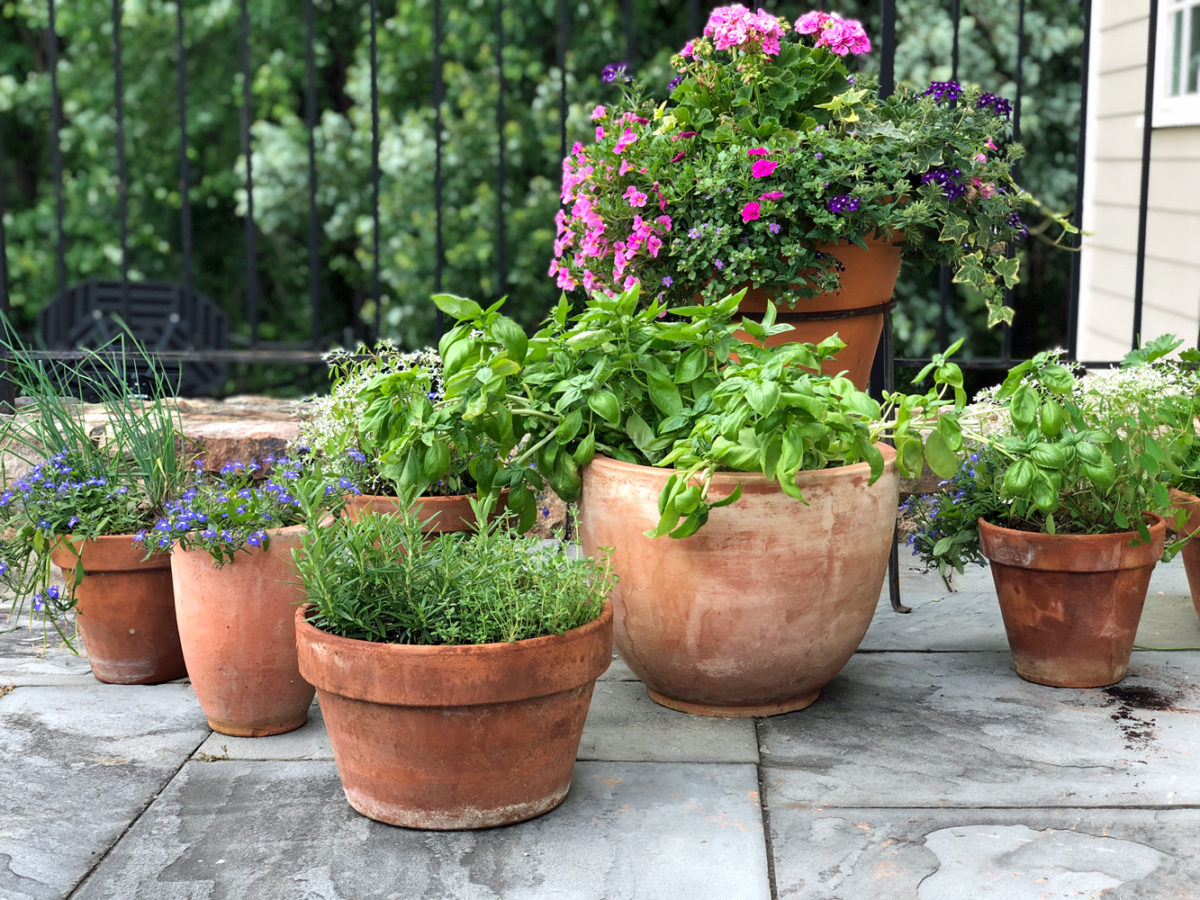
What You’ll Need To Make Pesto Sauce
Traditional pesto is made with garlic, nuts, salt, basil leaves, Parmigiano-Reggiano, and extra-virgin olive oil. It’s important to use top-quality ingredients, as the flavors really shine through.
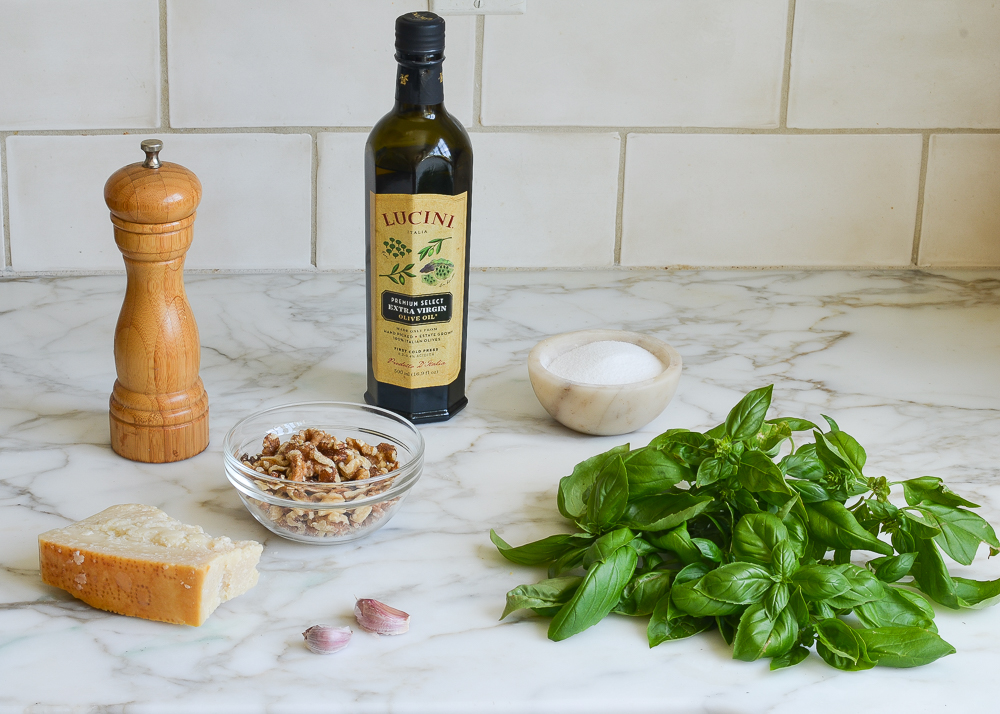
For the cheese, be sure to use authentic Parmigiano-Reggiano from Italy; domestic Parmesan is not the same thing. You can always tell if the cheese is authentic by looking at the rind, which is embossed with the name over and over. If the cheese is already grated, it should be labeled “Parmigiano-Reggiano,” not “Parmesan.”
For the nuts, I use walnuts instead of the more traditional pine nuts for a few reasons. First, I always seem to have walnuts in the house (pine nuts can be very pricey). Second, in recent years an increasing number of people, including me, have fallen prey to a bizarre problem with pine nuts called Pine Mouth Syndrome, a bitter, metallic taste in the mouth that develops a day or two after eating pine nuts. It can last for weeks and make eating or drinking anything very unpleasant. (You can use pecans or almonds, too.)
Step-by-Step Instructions
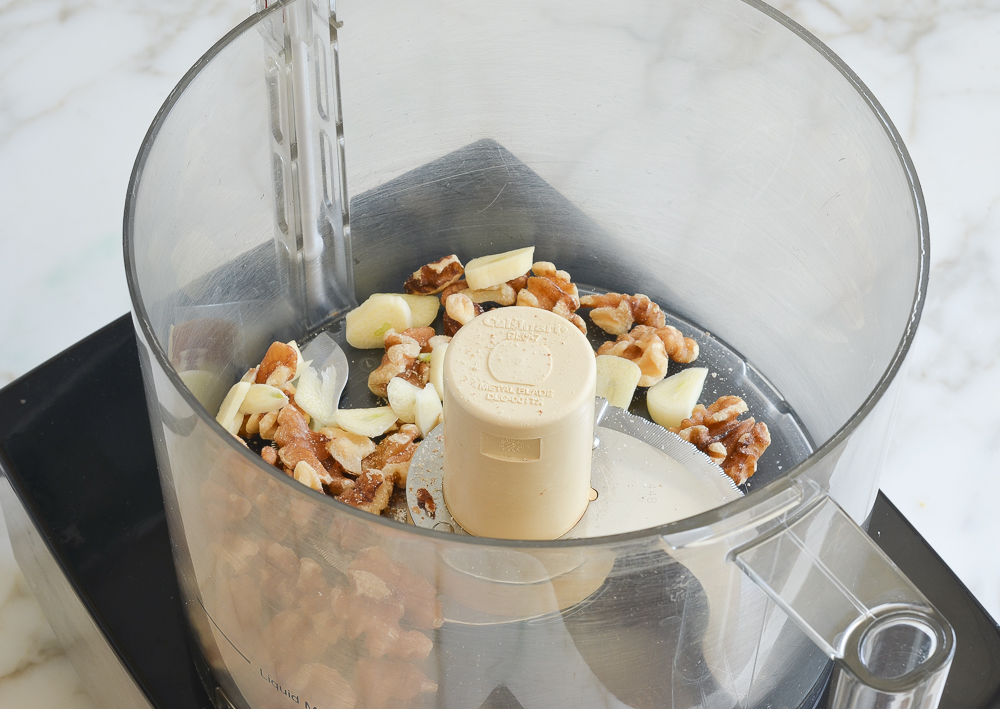
To begin, combine the walnuts and garlic in the bowl of a food processor and pulse until coarsely chopped.
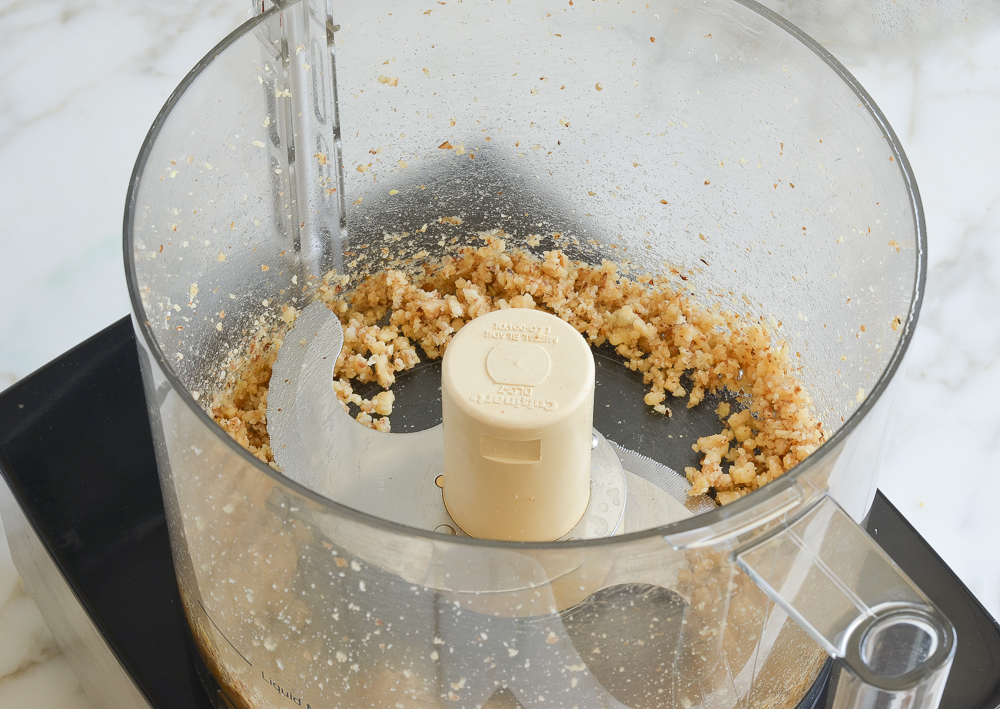
Add the basil leaves, salt, and pepper.
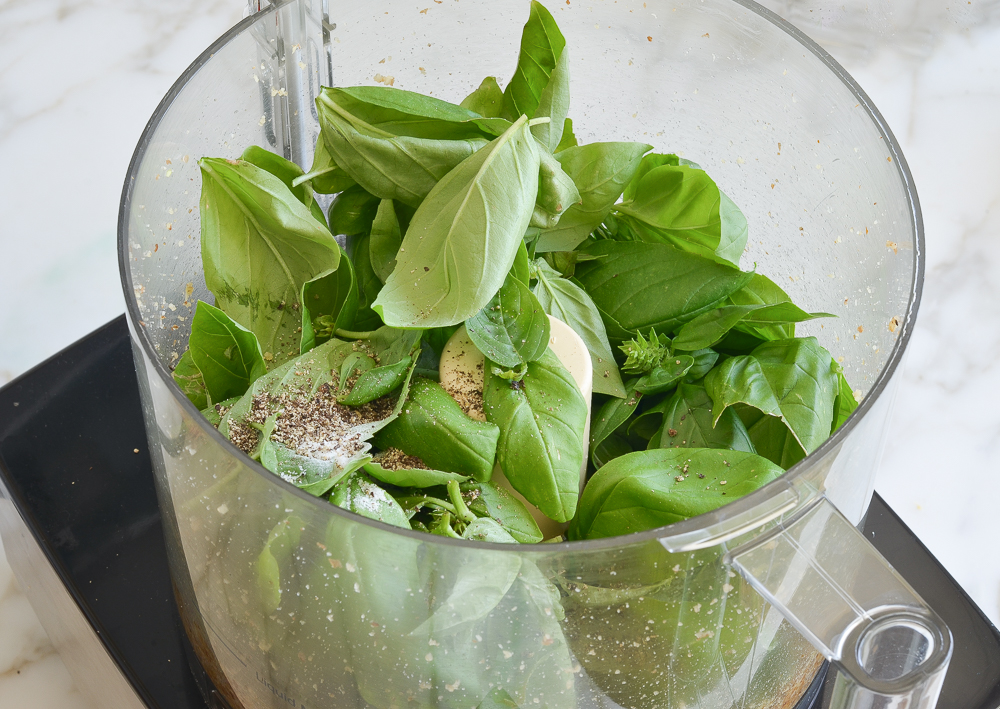
Process until finely chopped.
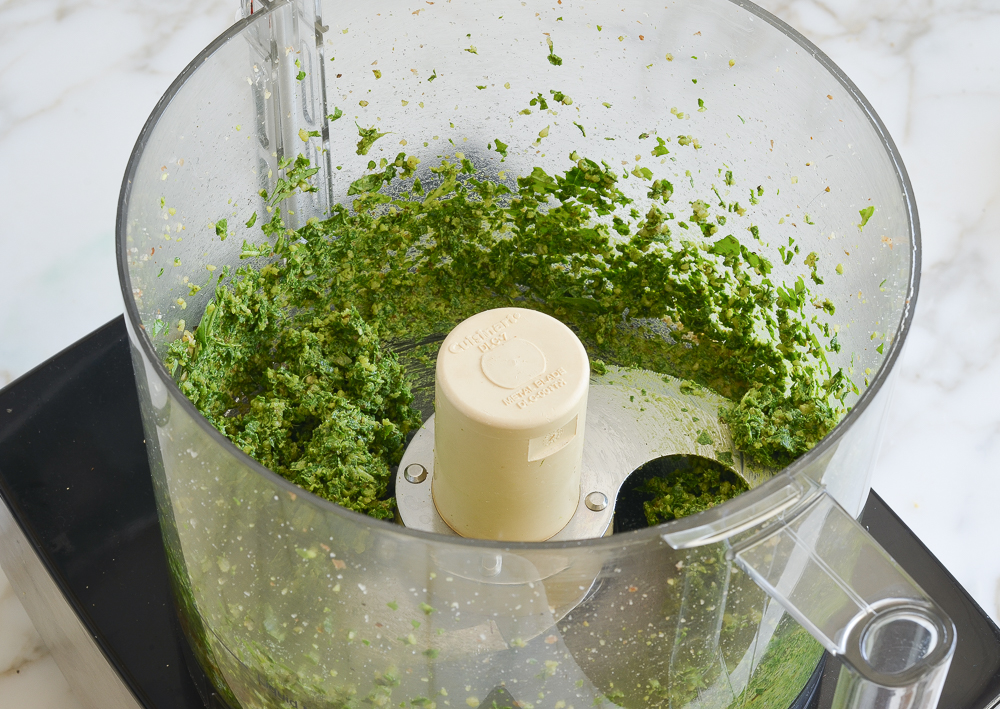
Then, with the food processor running, add the olive oil through the feed tube in a steady stream.
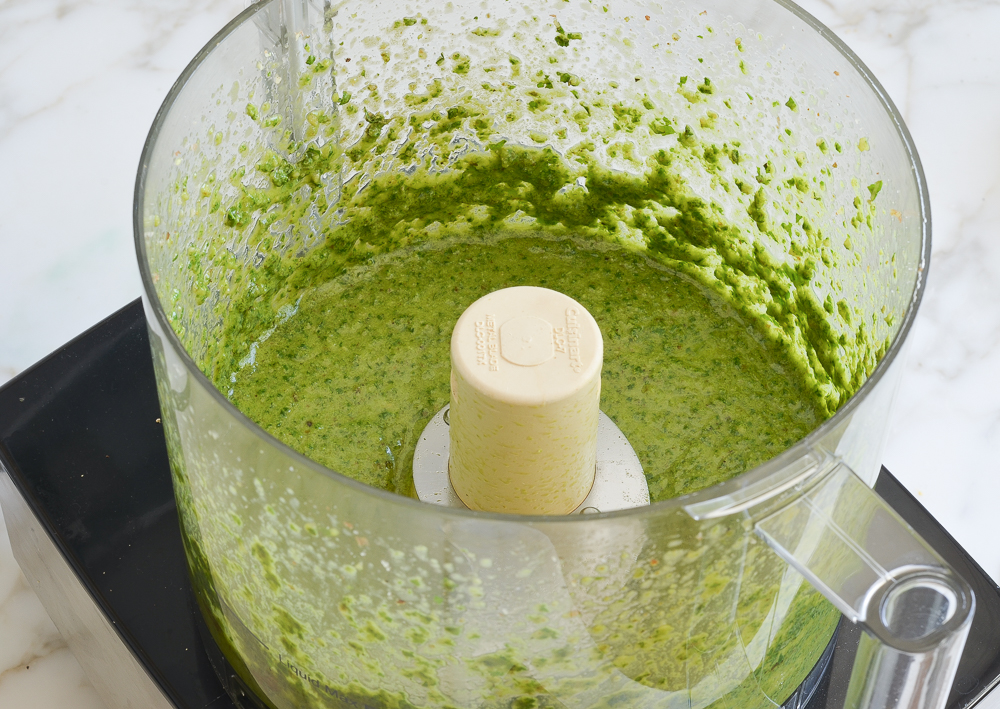
Add the Parmigiano-Reggiano.
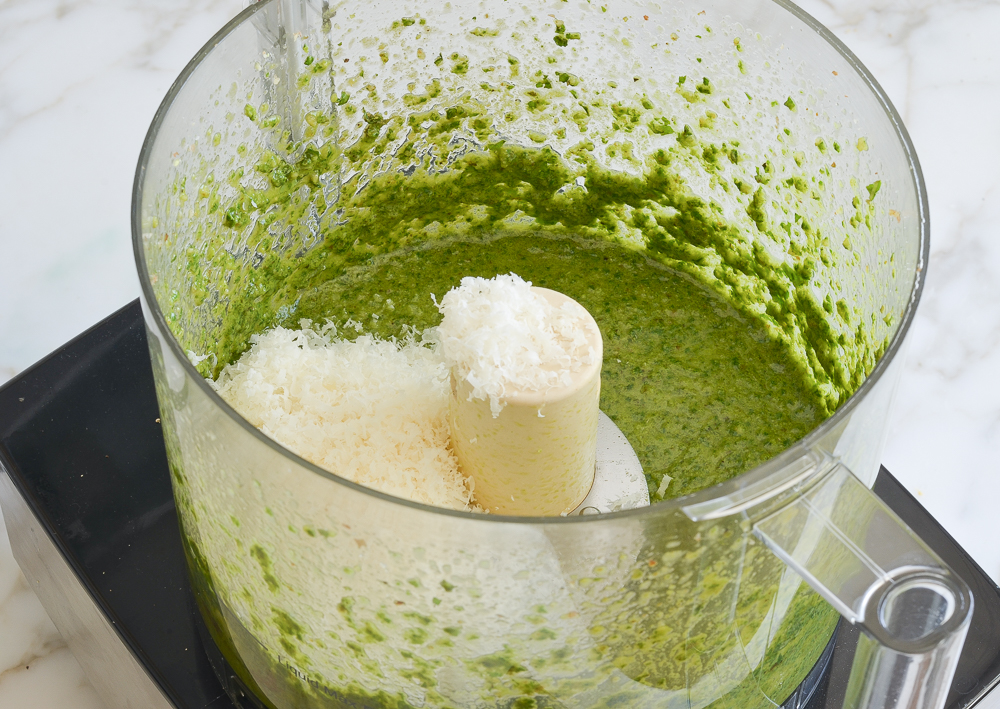
Process again until smooth, and that’s your pesto sauce.
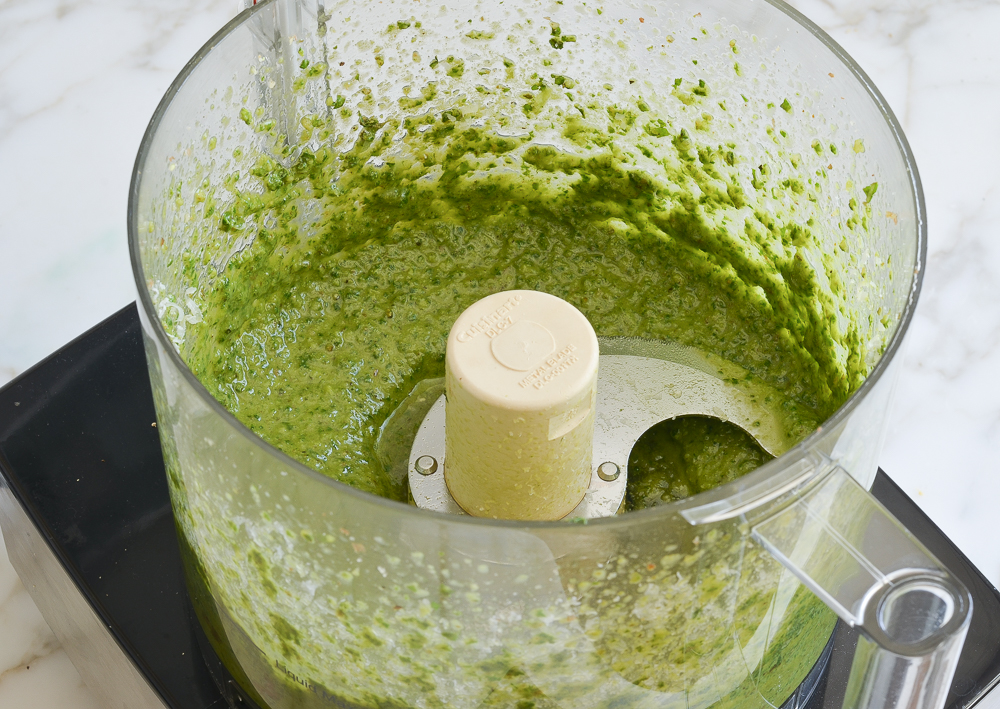
How To Store & Freeze Pesto
Use the pesto immediately or store it in a tightly sealed jar or air-tight plastic container, covered with a thin layer of olive oil (this seals out the air and prevents the sauce from oxidizing, which would turn it an ugly brown color). It will keep in the refrigerator for about a week.
Pesto can also be frozen in an airtight container for up to 6 months. I suggest dividing it into the compartments of an ice cube tray and freezing. Once frozen, remove the cubes from the tray and put in a sealable plastic bag or airtight container. You can add the defrosted cubes to vegetable soup, pasta salad with pesto, zucchini noodles, pesto pizza, eggs, sandwiches, and baked potatoes.

Video Tutorial
You May Also Like
The Best Basic Pesto
Homemade pesto sauce is easy to whip up and delicious on just about everything—from pastas and pizzas to salads and sandwiches.
Ingredients
- ⅓ cup walnuts
- 2 large garlic cloves, roughly chopped
- 2 cups packed fresh basil leaves
- ½ teaspoon salt
- ¼ teaspoon ground black pepper
- ⅔ cup extra virgin olive oil
- ½ cup grated Parmigiano-Reggiano
Instructions
- Place the walnuts and garlic in the bowl of a food processor fitted with a steel blade. Process until coarsely chopped, about 10 seconds. Add the basil leaves, salt, and pepper and process until mixture resembles a paste, about 1 minute. With the processor running, slowly pour the olive oil through the feed tube and process until the pesto is thoroughly blended. Add the Parmesan and process a minute more. Use pesto immediately or store in a tightly sealed jar or air-tight plastic container, covered with a thin layer of olive oil (this seals out the air and prevents the pesto from oxidizing, which would turn it an ugly brown color). It will keep in the refrigerator for about a week.
- Freezer-Friendly Instructions: Pesto can be frozen in an airtight container for up to 6 months. You can also divide your prepared pesto into the compartments of an ice cube tray and freeze. Once it’s frozen, remove the pesto cubes from the tray and put in a sealable plastic bag or airtight container. You can add the defrosted pesto cubes to soups, pasta dishes, eggs, sandwiches, and potatoes.
Nutrition Information
Powered by ![]()
- Serving size: 2 Tbsp.
- Calories: 159
- Fat: 17 g
- Saturated fat: 3 g
- Carbohydrates: 1 g
- Sugar: 0 g
- Fiber: 0 g
- Protein: 3 g
- Sodium: 161 mg
- Cholesterol: 4 mg
This website is written and produced for informational purposes only. I am not a certified nutritionist and the nutritional data on this site has not been evaluated or approved by a nutritionist or the Food and Drug Administration. Nutritional information is offered as a courtesy and should not be construed as a guarantee. The data is calculated through an online nutritional calculator, Edamam.com. Although I do my best to provide accurate nutritional information, these figures should be considered estimates only. Varying factors such as product types or brands purchased, natural fluctuations in fresh produce, and the way ingredients are processed change the effective nutritional information in any given recipe. Furthermore, different online calculators provide different results depending on their own nutrition fact sources and algorithms. To obtain the most accurate nutritional information in a given recipe, you should calculate the nutritional information with the actual ingredients used in your recipe, using your preferred nutrition calculator.
Gluten-Free Adaptable Note
To the best of my knowledge, all of the ingredients used in this recipe are gluten-free or widely available in gluten-free versions. There is hidden gluten in many foods; if you're following a gluten-free diet or cooking for someone with gluten allergies, always read the labels of your ingredients to verify that they are gluten-free.

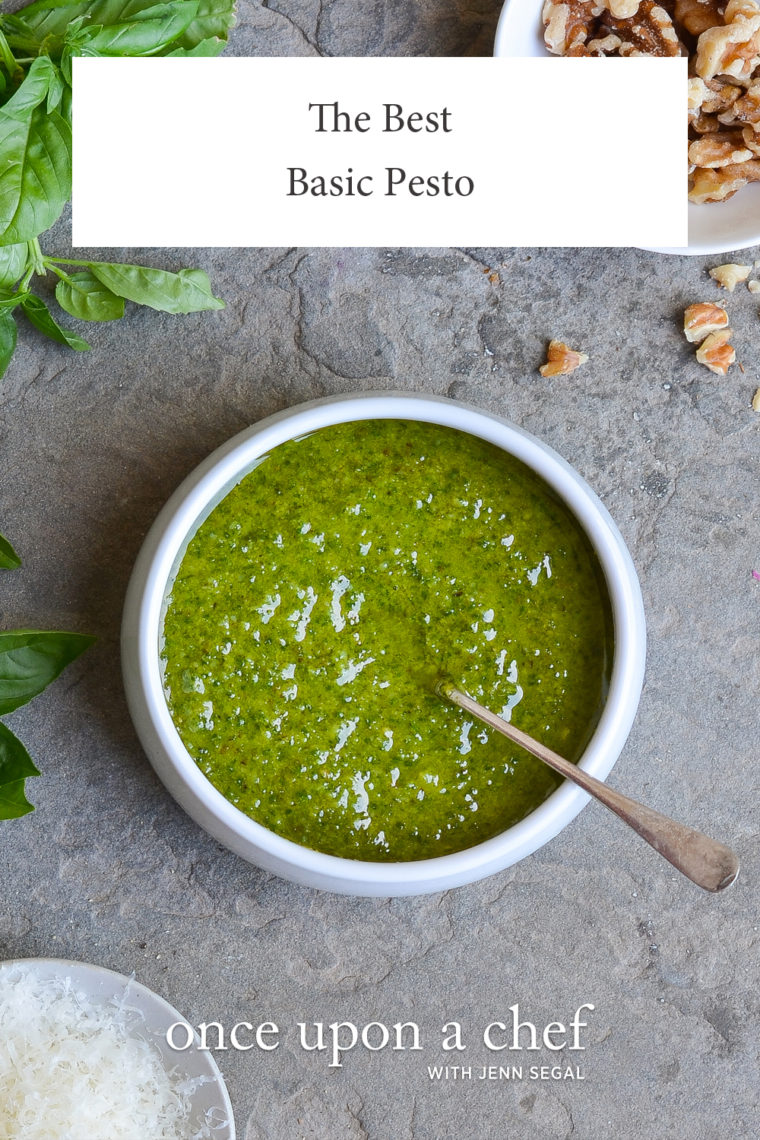
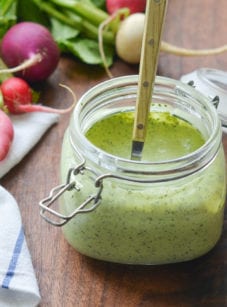
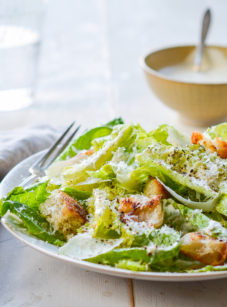

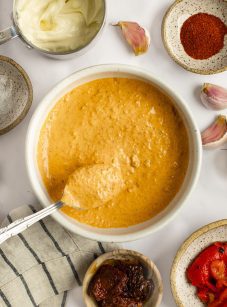
Tasty use of garden basil. Per other reviewer’s suggestions, I cut the salt to 1/4 teaspoon which was plenty for us. Next time, I’ll use just one garlic clove as the garlic flavor was pretty potent.
I substituted roasted (unsalted) pepitas due to my son’s tree nut allergy. Worked just fine.
Delicious! Doubled the recipe with no problem. I didn’t find that there was too much olive oil. The more the tastier!
Thanks for this amazing recipe! 5 stars from me!
For me, this is way too salty. Otherwise, delish.
My food processor is packed away and unattainable but I’ve got tons of basil so would love to try this recipe! I do have a Ninja food blender that I use for smoothies….would that process the nuts, garlic and basil to the same consistency?
Sure, Lucia, that should work. Enjoy!
I have been directed that American’s use way too much olive oil compared to Italian cooking. I cut the olive oil to 1/4. It may not have had the same flavor Jenn was going for, but it was very fresh and flavorful
Omg, Jenn, this is the best Pesto ever!!! You are my ‘go to’ for any recipe, but I must say this is amazing! Great as a condiment for fish as well as my favorite Vegie Pasta (which is always an invention depending on the fresh vegies on hand). Thank you for being there!
If I did want to substitute pine nuts (I’ve never experienced what you describe!) would it still be the same amount as the walnuts?
Yep – Hope you enjoy!
Of course another perfect recipe!! I had a ton of fresh basil at the end of November!! Gotta love California for some things :). I made the recipe times 5 and it was a bit of a challenge in one shot with the food processor but I made it work. I have giant ice cube trays that I bought this summer and each cube has 6 servings! I can’t wait to share the deliciousness with friends. Tonight I am going to use the unfrozen to make pesto with shrimp and mushrooms, might throw a bit of cream in there too.
Thank you again Jenn!
Great recipe, especially since I had a ton of walnuts around from our tree. For those that want to use pine nuts for pesto – pine nut mouth has been traced back to a species of pine nut exported from China. If you manage to find European or North American pine nuts you shouldn’t have a problem. Cheers!
I also made a double batch with an aged Gruyere (so a semi-hard cheese) from a local organic farm. Turned out amazing. I distributed most of it into a cupcake tin, filling each cup about two-thirds the way up until it ran out. Then I froze it in that – so I have pucks that are the right size to add one to pasta for two.
I’ve made this twice in the last two weeks and the first time I made it exactly as written. It was the best pesto I’d ever made and using walnuts instead of pine nuts was a revelation.
The second time I made it as written, except I used generic Parmesan cheese instead of Parmigiano-Reggiano. While still good, the difference in flavor profile was notable. If you’re considering subbing out the good cheese for the cheaper cheese, heed Jenn’s advice!